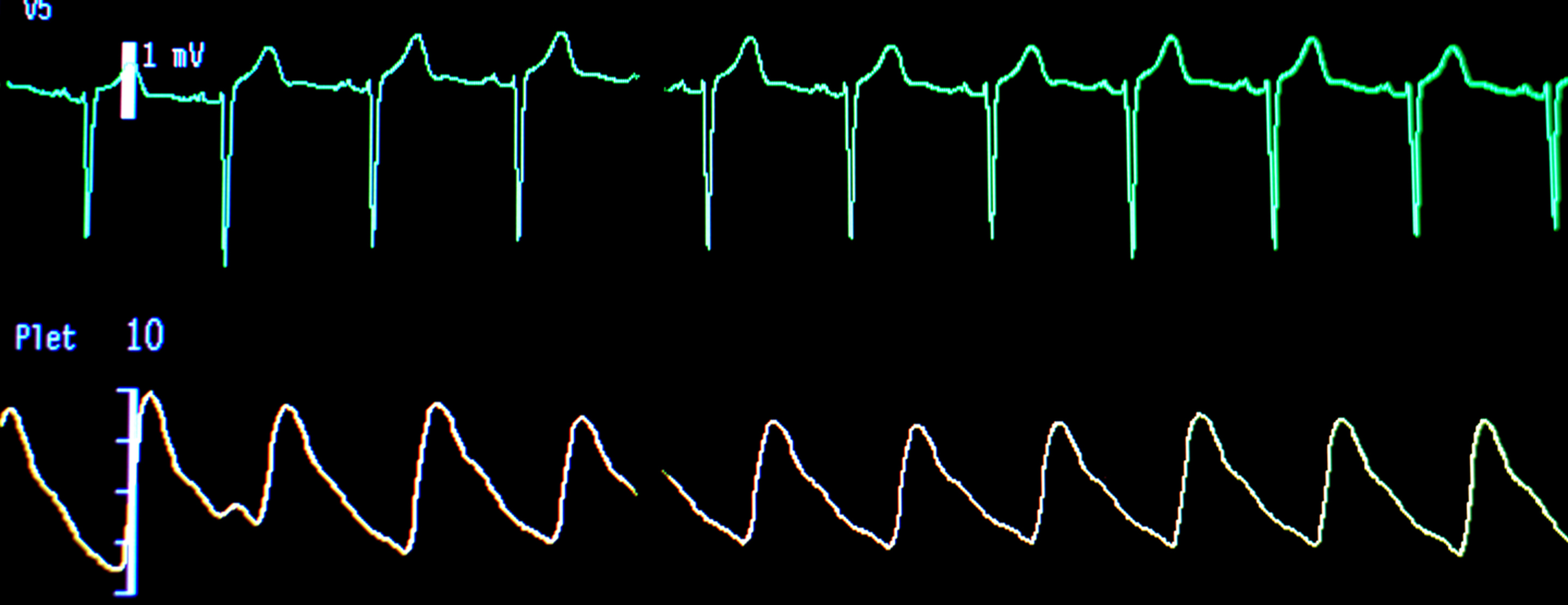
His bundle electrography
Definition
His bundle electrography is a test that measures electrical activity in a part of the heart that carries the signals that control the time between heartbeats (contractions).
Alternative Names
His bundle electrogram; HBE; His bundle recording; Electrogram - His bundle; Arrhythmia - His; Heart block - His
How the Test is Performed
The bundle of His is a group of fibers that carry electrical impulses through the center of the heart. If these signals are blocked, you will have problems with your heartbeat.
The His bundle electrography is part of an
The catheter is carefully moved through the vein up into the heart. An
How to Prepare for the Test
You will be told not to eat or drink anything for 6 to 8 hours before the test. The test will be done in a hospital. Some people may need to check into the hospital the night before the test. Otherwise, you will check in the morning of the test. Although the test may take some time, most people DO NOT need to stay in the hospital overnight.
Your health care provider will explain the procedure and its risks. You must sign a consent form before the test starts.
About half an hour before the procedure, you will be given a mild sedative to help you relax. You will wear a hospital gown. The procedure may last from 1 to several hours.
How the Test will Feel
You are awake during the test. You may feel some discomfort when the IV is placed into your arm, and some pressure at the site when the catheter is inserted.
Why the Test is Performed
This test may be done to:
- Determine if you need a pacemaker or other treatment
- Diagnose arrhythmias
- Find the specific location where electrical signals through the heart are blocked
Normal Results
The time it takes for the electrical signals to travel through the bundle of His is normal.
What Abnormal Results Mean
A pacemaker will be needed if the test results are abnormal.
Abnormal results may mean you have or had:
- Chronic conduction system disease
- Carotid sinus pressure
- Recent
heart attack - Atrial disease
Risks
Risks of the procedure include:
- Arrhythmias
Cardiac tamponade Embolism from blood clots at the tip of the catheter - Heart attack
- Hemorrhage
- Infection
- Injury to the vein or artery
- Low blood pressure
Stroke
References
Chernecky CC, Berger BJ. H. In Chernecky CC, Berger BJ, eds. Laboratory Tests and Diagnostic Procedures. 6th ed. Philadelphia, PA: Elsevier Saunders; 2013:chap H;602-667.
Miller JM, Tomaselli GF, Zipes DP. Diagnosis of cardiac arrhythmias. In: Zipes DP, Libby P, Bonow RO, Mann DL, Tomaselli GF, Braunwald E, eds. Braunwald's Heart Disease: A Textbook of Cardiovascular Medicine. 11th ed. Philadelphia, PA: Elsevier Saunders; 2018:chap 35.
Review Date: 05/16/2018
The information provided herein should not be used during any medical emergency or for the diagnosis or treatment of any medical condition. A licensed physician should be consulted for diagnosis and treatment of any and all medical conditions. Call 911 for all medical emergencies. Links to other sites are provided for information only -- they do not constitute endorsements of those other sites. Copyright ©2019 A.D.A.M., Inc., as modified by University of California San Francisco. Any duplication or distribution of the information contained herein is strictly prohibited.
Information developed by A.D.A.M., Inc. regarding tests and test results may not directly correspond with information provided by UCSF Health. Please discuss with your doctor any questions or concerns you may have.





